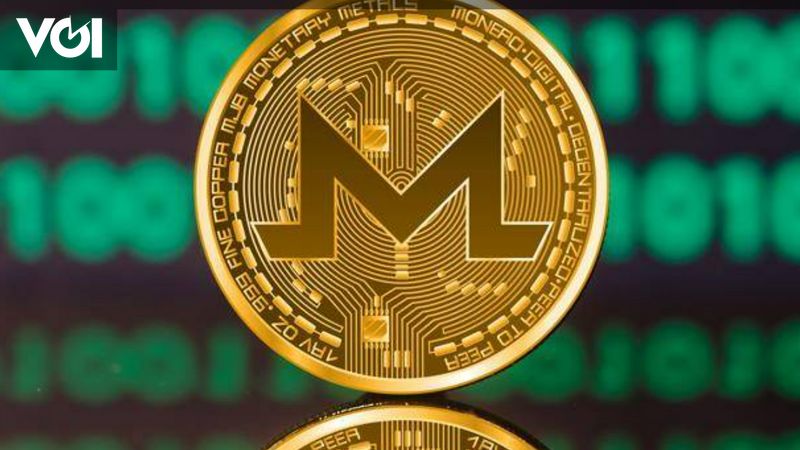JAKARTA – Monero (XMR) is one of the cryptocurrencies best known for its privacy features. Monero allows the identity of the sender, receiver and the number of transactions to be hidden on the blockchain, making it difficult to be traced by unauthorized third parties.
Monero is a cryptocurrency that was launched in 2014 as a result of a fork from Bytecoin, the first cryptocurrency to use the CryptoNote protocol. Monero also uses a proof-of-work algorithm called RandomX, which is designed to prevent mining using specialized hardware such as ASICs.
The goal is to keep the Monero network decentralized and fair. Additionally, Monero periodically undergoes hard forks to improve functionality and security and to avoid attacks and abuse.
One of Monero's incidents was the robbery of Vastamamo, a private Finnish provider of psychotherapy services, in October 2020.
Unidentified hackers accessed the company's database, which contains the personal data and medical records of around 40,000 patients. The hackers then demanded a ransom of 40 Bitcoin (BTC), approximately 25.5 billion Indonesian rupiah, in exchange for not releasing the data. The hackers also sent blackmail emails directly to some patients, demanding a payment of 200 euros (3.5 million Indonesian rupiah) in the form of Monero.
Finland's law enforcement agency, the National Bureau of Investigation (NBI), immediately launched an investigation to identify and arrest the hackers. In early February 2023, the NBI announced the arrest of a 21-year-old man suspected of being the culprit in the Vastamamo robbery. The man is Julius Aleksanteri Kivimenki, a Finnish national residing in France. He was arrested based on an Interpol arrest order and was later extradited to Finland.
The NBI claims to have found a way to identify individuals using Monero for money laundering. The NBI also claims to have developed forensic analysis techniques that allow it to track Monero transactions using data from cryptocurrency exchanges and cryptocurrency mixing services (mixers). Additionally, the bureau said it has worked with international law enforcement agencies, including Europol and the FBI, to solve the case.
However, the NBI's claims have drawn much skepticism and criticism from the cryptocurrency community, especially Monero supporters, who have called on the NBI to provide publicly verifiable evidence to substantiate its claims, and have accused the agency of relying on weak and irrelevant evidence to reach excited and inaccurate conclusions.
Some users on the online discussion platform Reddit have proposed alternative scenarios that are more plausible to explain how the NBI caught Kivisi. One scenario is that the NBI only tracked the Bitcoin transactions that the hackers used to buy Monero on cryptocurrency exchanges. The NBI then discovered that the number of Monero the hackers purchased was the same as the number of Monero demanded for ransom. From there, the NBI concluded that the hackers were the owners of the Monero without actually tracking the Monero transactions themselves.
Another scenario is that the NBI relies solely on information provided by Binance, one of the world's largest cryptocurrency exchanges known to cooperate with law enforcement. Binance could provide data on the IP addresses, identities, or trading activity of users who swapped Bitcoin for Monero or deposited Monero into the exchange. Using this data, the NBI could potentially link the hackers to specific Binance accounts and trace back the origins of the Bitcoin used by the hackers.
These two scenarios show that the NBI does not really have the ability to trace Monero transactions, but only uses traditional investigative methods that rely on hackers' vulnerabilities and carelessness. If the hackers become more careful and take additional precautions such as VPNs, Tor, and other crypto-mixing services, it is highly likely that the NBI will not be able to find them.
Tags: crypto technology altcoins peter hacker

